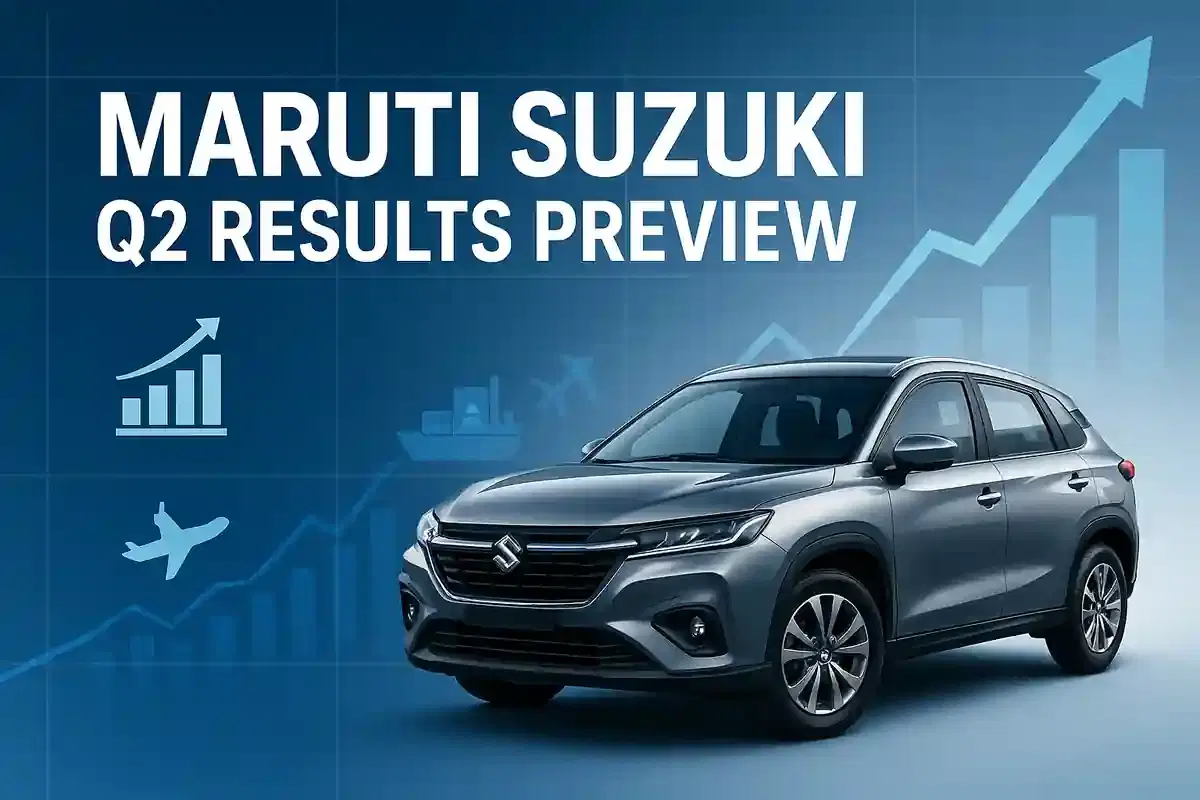Maruti Suzuki Q2 Preview: Steady Revenue Growth Expected Amidst Margin Pressures
Auto
|
29th October 2025, 8:04 AM

▶
Stocks Mentioned :
Short Description :
Detailed Coverage :
Maruti Suzuki, India's largest carmaker, is projected to report stable revenue growth for the September quarter (Q2FY26). This is expected due to increasing demand elasticity, a recovery in car sales following Goods and Services Tax (GST) rate adjustments, and a more favorable product mix. Profitability could face pressure, with factors like increased discounts, wage revisions, higher marketing expenditures, and costs associated with new manufacturing facilities weighing on margins. Brokerage firms estimate revenue growth of approximately 6-7% year-on-year, supported by better vehicle pricing and increased export contributions. However, Earnings Before Interest, Taxes, Depreciation, and Amortization (Ebitda) might decrease by 4-11% year-on-year due to rising input and operating costs. Profit After Tax (PAT) forecasts show a wide range, from a 9% decline to a 23% rise, depending on specific cost assumptions and foreign exchange impacts. Analysts believe Maruti Suzuki is well-positioned to capitalize on the rebound in car demand, outperforming competitors due to its diverse vehicle range and pricing flexibility. Investors will closely monitor the company's management commentary for insights into demand trends after GST rate changes, the strength of its export business, and the future path of its profit margins.
Impact: This news is highly relevant for investors as it provides forward-looking estimates for a major automotive company. Positive or negative deviations from these expectations can significantly influence the company's stock price and sentiment in the broader auto sector. Impact Rating: 7/10
Difficult Terms: GST: Goods and Services Tax, a unified indirect tax system in India. Product Mix: The variety and proportion of different products (e.g., entry-level cars vs. premium SUVs) a company sells. Demand Elasticity: How much the demand for a product changes in response to a change in its price. Realizations: The average price at which a company sells its products. Ebitda: Earnings Before Interest, Taxes, Depreciation, and Amortization. It's a measure of a company's operating performance. PAT: Profit After Tax, the company's net profit after all expenses and taxes. UV: Utility Vehicle, typically refers to SUVs and MPVs. Bps: Basis points, where 100 basis points equal 1 percent. Operating Leverage: The extent to which a company uses fixed costs in its operations. Higher fixed costs mean higher operating leverage, leading to greater profit swings with changes in revenue. Forex: Foreign exchange, relating to currency transactions and fluctuations. Street: Refers to the stock market or financial analysts collectively.